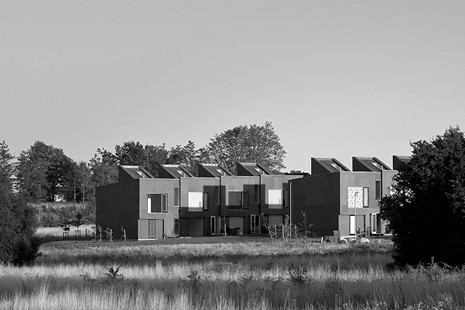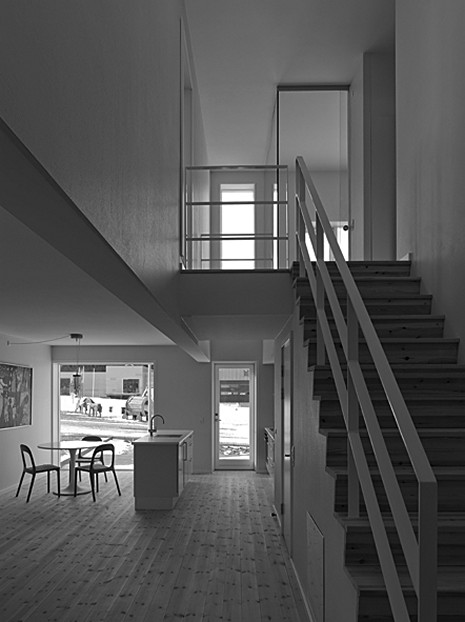Description
The row houses were created in the context of a housing exhibition. Arranged in two rows, each segment or terrace is slightly staggered in relation to its neighbour, in harmony with the gentle slope of the terrain. Although the atrium in each unit is only roughly 1 m in width, it runs front-to-back across the entire depth of the row house; the atrium terminates in a clerestory set into a triangular vault. However, the unique characteristic of this typology is that ground floor and the upper level are arranged on opposite sides of this atrium, with the result that all units are stacked within each other. The bedroom on the garden side is at right angles to this atrium, separated only by a glass wall; a glass sliding door leads from the upstairs landing into the bedroom.
The atmosphere in the apartment is bright and open; the many sightlines resulting from this arrangement make it spacious and more complex in appearance than it is. The stairs are like a piece of furniture incorporated into the wall, into which a WC, storage space, and one of the two kitchen rows are also integrated on the ground floor. It is this densification of ancillary functions that creates the generous and open feel in the living room area. The staggered arrangement of the row houses creates additional space for another individual room, a bathroom, and a roof patio in the two end units. The row houses have front- and backyards, with entrance vestibules that also serve as a privacy screen.
Drawings
Floor plan diagram, scale 1:500
Site plan, scale 1:500
Front and garden elevations, scale 1:500
Ground and upper floor of one 4- and one 3-room row house, scale 1:200
Longitudinal section with offset housing units, scale 1:200
Cross section of void with stairs and skylight, scale 1:200
Photos

Exterior view

Interior view of living space
Originally published in: Oliver Heckmann, Friederike Schneider (eds.), Floor Plan Manual Housing, fourth revised and expanded edition, Birkhäuser, 2011.